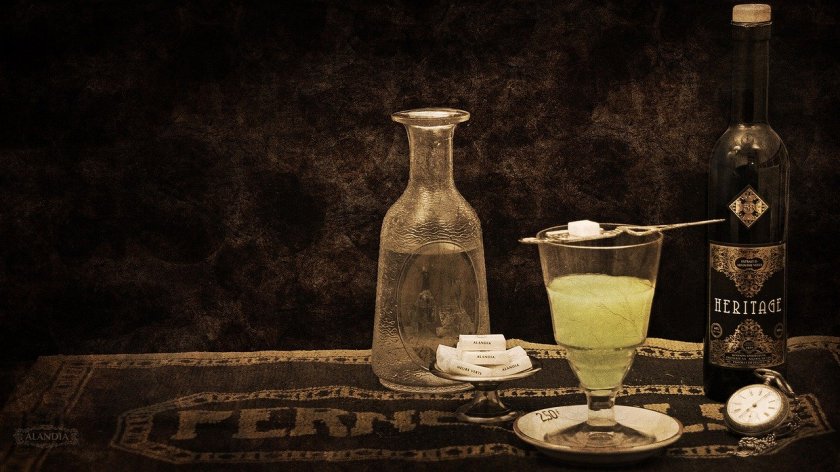
There are a couple of videos out on people trying absinthe for the first time and one on people trying the strongest absinthes (generally, in this case, “novelty” absinthes which are little more than gimmicks). Not only do they generally choose, let us say less well regarded varieties of absinthe for these videos but they don’t do it at all right. Invariably they take it as shots and just knock it back.
That is entirely the wrong way to drink absinthe
I’ll admit that when I first tried absinthe I drank it straight. At least I had the sense to sip it. This may be a surprise to absinthe aficionados, but I found it quite acceptable that way. There was a strong flavor of anise, a somewhat bitter undertaste, and the variety I had available then had a citrusy (shut up, spell check. That is totally a word) finish. Not bad. At least one reviewer of absinthes (LigeiaRessurected on Youtube) considers absinthe too bitter to drink straight. As always, your mileage may vary.
It was that very reviewer, however, who introduced me to the “proper” way to drink absinthe, the traditional way. And that opened up whole new worlds. It went from being an acceptable drink to truly amazing.
The basic principle is that you dilute the absinthe about 3-5 to 1 with ice water, and you don’t just dump in the water but add it in slowly, anywhere from a slow drip to a thin trickle. The various herbs used in the making of absinthe (wormwood, anise, fennel, others) leave it infused with a number of “essential oils” (“essential” in the sense of “essence” not in the sense of “necessary”). These oils are fully in solution in the straight absynthe but, as you dilute it they come out of solution forming an emulsion that gives diluted absinthe its cloudy appearance (called “louche”). By diluting slowly it allows time for each of the various oils to fully emulsify in turn so that the complex flavor and aroma profile can completely develop. Here patience is rewarded. The water needs to be absolutely ice cold.
Usually, during the dilution the water is trickled over a sugar cube (I use cubes of monkfruit and stevia sweetener since I can’t do sugar), adding just a bit of sweetness to counter the bitterness of the wormwood.
Traditionally, there is an entire setup just for the preparation of absinthe. Absinthe glasses are shaped with a “reservoir” at the bottom such that when the reservoir is filled with absinthe and water is added until the glass is nearly filled you have the proper dilution. Absinthe spoons are basically flat spoons in decorative shapes with holes. The spoon is placed across the mouth of the glass and the sugar cube is placed on it. And absinthe fountains are glass urns on raised pedestals with one or more spigots at the bottom. The urn is filled with ice water, the glass with absinthe, spoon, and sugar cube is placed under the spigot, and the valve adjusted to produce the desired rate of drip.
I don’t have such a set up yet. Instead, I use a wine glass. I use a shot glass to measure absinthe into it. I place the absinthe spoon across the top of it (I do have one of those) to hold my sweetener, and carefully pour ice water from a carafe (lid mostly closed to restrict water flow) over the sweetener cube until the glass is full.
Once done, sip slowly to fully appreciate the mix of aromas and flavors.

Rather just swirl it in a gas and add rye. Skip the simple syrup
LikeLike
that’s glass. not gas.
LikeLike
Absinthe and rye? Hadn’t considered that one. Hrmm.
LikeLike
It’s a simplification of the first one here: https://www.allrecipes.com/article/essential-absinthe-cocktails/
LikeLike
Oh, the Sazerac. Made such a few times. The very tiny amount of the rinse is such that even $HOUSEMATE is alright with it.
LikeLike